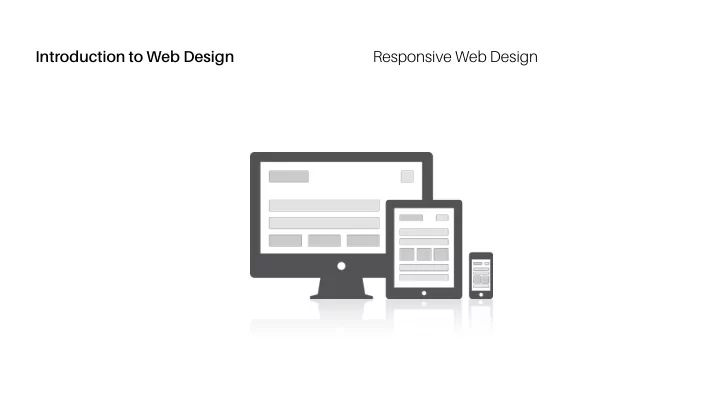

Responsive Web Design Introduction to Web Design
Responsive Web Design Introduction to Web Design “The control which designers know in the print medium, and A Dao of Web Design often desire in the web medium, is simply a function of the limitation of the printed page. We should embrace the fact that the web doesn’t have the same constraints, and design for this flexibility. But first, we must ‘accept the ebb and flow of things.’” —John Allsopp, “A Dao of Web Design”
Responsive Web Design Introduction to Web Design Mobile traffic is as (if not more) relevant as desktop traffic now. Responsive Design We should build for the type of screens that will be used to access our sites. Responsive web design uses “media queries” to figure out what resolution of device it’s being served on. Flexible images and fluid grids size correctly to fit the screen. Responsive web design is design for flexibility.
Responsive Web Design Introduction to Web Design Flexible grids (fluid layouts) Foundations of Responsive Design Media queries Flexible, responsive images
Responsive Web Design Introduction to Web Design Features you can include in a media query include : Media Queries width, height, device-width, device-height, orientation, aspect-ratio, device-aspect-ratio, color, color-index, monochrome, resolution, scan grid Most of the above can be combined with min- and max- prefixes. The most common media queries assess min-width and max-width . Media queries can be used to load an alternate style sheet or, more commonly, to offer alternate styles within an existing style sheet.
Responsive Web Design Introduction to Web Design CSS media queries use the @media rule followed by two Media Query Syntax optional values: “ only ” or “ not ” “ only ” screens out older browsers from reading the rest of the query. “ not ” negates the result: “ not screen “ means everything except screen-based media. A feature: value pair, enclosed by parentheses, comprises the essence of the media query. Media features that can be assessed are predefined. Multiple feature: value pairs can be combined with “ and “.
Responsive Web Design Introduction to Web Design CSS Rule Set CSS Rule Set with a Media Query body { @media only screen and (min-width: 480px) { background-color: orange; body { } background-color: orange; } }
Recommend
More recommend